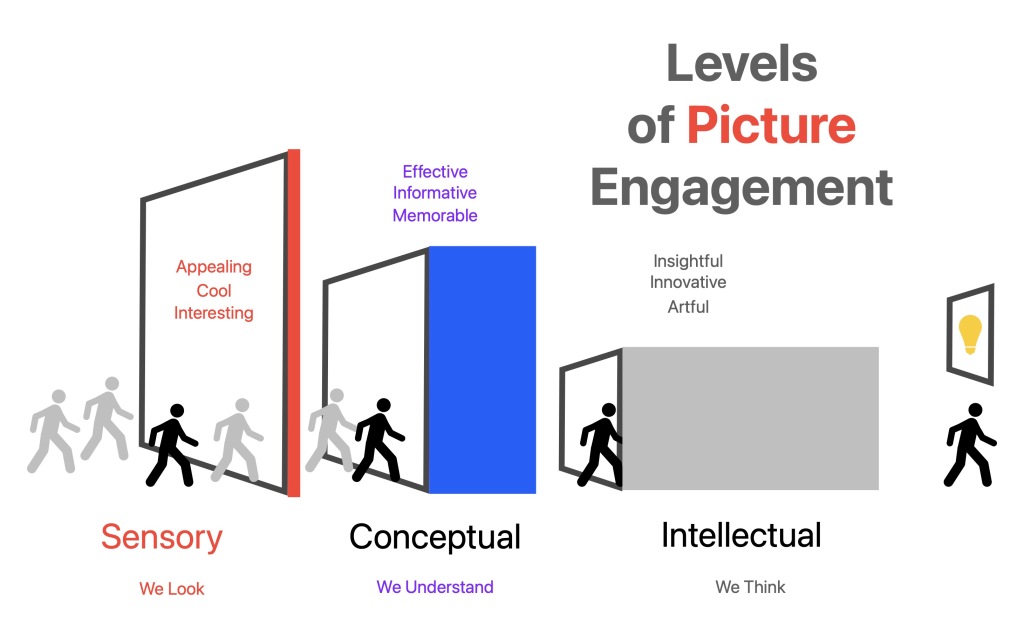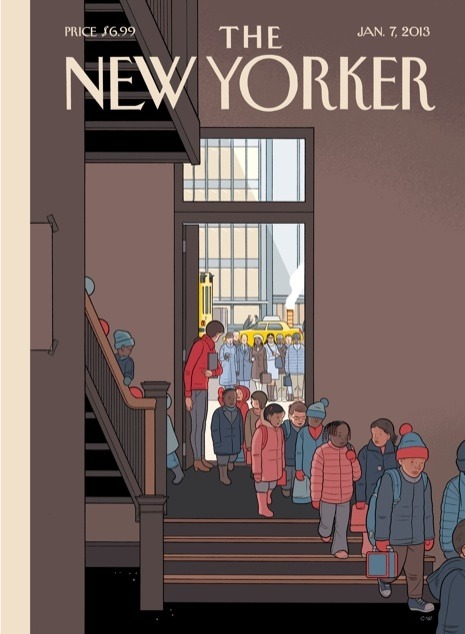
Some pictures we remember. Most we don’t. They go in one eye and out the other, to steal a phrase. Still fewer open our eyes and change our perceptions.
As an illustration professor, I’m often advocating for pictures that are more resonant. I’m looking for deeper images – ones that are more than a just a pretty picture. So to help make my point, I’ve been trying to picture how images can deliver more for the viewer. I tell my students, that the more you put into a picture, the more a viewer can take out. But I’m not talking about more details, or more complication. Confusion and exhaustion are not good ways to communicate. It’s what’s behind the image that counts – the depth – the layers of meaning.
Imagine that there are three levels of engagement that a picture can offer, and that the very best illustrations reach all three.
Sensory
In a flash, the combination of good art-making and a well-chosen subject grabs a viewer. We first find something appealing, cool or attractive. While most things we see in a day are instantly dismissed, or not noticed at all, skillful images attract viewers on a sensory level in a flash.
But while good pictures succeed on the surface, they can offer more. Surface attention can be fleeting. An artist can take a viewer beyond just looking. For illustrators, that’s a requirement. Illustrators are the writers of pictures who use communication concepts to connect more deeply.
Conceptual
The concept of an image, at its most basic, is the thing the we remember about it. Concepts are all those personal decisions that an artist makes in order to be seen and heard beyond a glance. Those decisions may be of content or form. Either way, a viewer soon understands that this is not just a picture, but a message or an expression – it is something to read and to understand. The image is saying something and they come to recognize it. Illustration is a form of communication, and when illustrations work, viewers get them.
But then there are images that engage even further with the viewer. The late-great illustrator Milton Glaser used to say that there were three possible results to seeing an illustration: “Yes” (I get it), “No” (I don’t get it), and, “Wow”. For me, the next step of engagement is Wow.

(Bob) Dylan by Milton Glaser, 1966
Intellectual
The deepest engagement a viewer can have with an image is to think about it beyond the actual viewing. An intellectual engagement leaves a lasting impression. Imagine someone carrying a picture around in their head because its so insightful, innovative or truly artful that it can’t be unseen. Those are the illustrations that captivate – the ones that intrigue. Those images are so clever, wise or wonderful that other images are trite by comparison. Some are so persuasive as to change the we see or think. Some capture something so meaningful as to become emblematic of a time, place or person. Regardless, these are the rare images that we hold, and because we’ve engaged with them at the deepest level, they are part of us now. They are worth the extra efforts of the creator.



